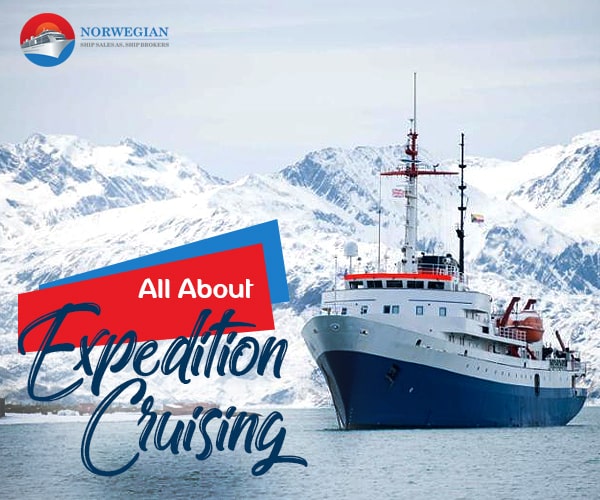Subjected to a slow start, expedition cruising has been rapidly gaining momentum in the cruise industry. But the question still remains- what is expedition cruising? Why is it so popular? What is the industry all about? Keep reading to find out more about the same.
Expedition Cruise: Definition
Expedition cruise ships are having a moment right now. Defined as small cruise ships which include an adventurous itinerary while still including the luxurious provisions on board, expedition cruise ships have a long history that dates back to the early seventies. Expedition cruising is often used as an orthodox expression which is closer to being a scientific expedition than being a leisure pursuit. The idea is to not sip a cocktail by the pool on the deck, but get closer to making expeditions and explore certain interesting destinations around the globe. The vessels are essentially small and have a lower capacity as compared to the bigger versions. These ships weigh not more than 30,000 tons.
Who is the Expedition Cruise For?
Cruise guests and enthusiasts seem to be the obvious target audience for this popular form of cruising. As the number of cruise vessels increases with a higher standard of provisions, all the while with reduced costs, the cruise guests will benefit more than expected. With time, experts believe that expedition cruising will become a well-functioning market for the consumers at large.
The Ships
The expedition cruise vessels are typically small in size. The berth capacity varies between 100 and 200. Due to their smaller size, these ships are able to anchor in small ports. To work smoothly on icy waters, most of the ships are fitted with hulls. The term “small cruise vessels” are often used to denote expedition vessels.
The Favorite Destinations
Unlike the mainstream cruise vessels, the expedition versions are not sailing on the similar routes. They can be seen sailing all around the world, however, on a closer look, you will realise that the expedition vessels are usually taking on those places which have something to offer in terms of a geographical expedition. Mostly remote and bucket-list worthy destinations are aimed for when going for expedition cruising. Some of the primary regions of interest include the Antarctica, Alaska, Greenland, Iceland, North West and North East Passages, Galapagos Islands, Australia and Southern Pacific.
The Expedition Business Structure
In the expedition cruising segment, the vessels are often chartered to providers of dedicated capacity. Unlike the mainstream cruising segment where the ships are assets of the owners who run and develop the product themselves (with the technical aspects being taken care by third parties at times), expedition cruise vessels are chartered to other service providers for a short period of time. This charter system has allowed the owners much flexibility. Though over time, the industry is expected to become similar to that of the mainstream vessels, in the present, the prospect is wide.
There are almost 25 individual companies in the market that control more than 40 expedition cruise vessels. Its rising popularity has attracted a wide number of big players in the industry to participate in the expedition cruising segment.
The Challenges for Future
The cruise industry has been on a rise for the last few decades, and most experts seem to be enthusiastic about the steady growth. As for the segment which deals with expedition cruising, the future prospects seem high and sound. With more people willing to move away from the conventional ways of cruising, and trying out something new and advanced, expedition cruising is stated to have a bright future.
However, it is incorrect to look forth the challenges. Some of these can be highlighted as follows.
- As the demand rises, so will be the need to supply more vessels.
- Old vessels will have to retire which will give rise to situations pertaining to overcapacity.
- Ticket prices might plunge downward due to the increase in supply. This can continue for a few years until the market adjusts to the changes. Some experts even believe that ticket prices might have a permanent reduction in their cost.
- Cruise vessel owners might have difficulty in finding employment for the older vessels due to the low salaries.
- There are high chances of cost overrun and delay in delivering the ships on time. This can cause a massive imbalance in demand and supply, which can further affect the entire industry.
There might be challenges, however, it is seemingly easy to overcome these in the long-run. There might be a delay in delivering the ships, but the new and improved expedition cruise ships will enter the market and will keep leading to rising in their demand. Expedition cruise is on a high and rise now and has no intentions of stopping. The concept is catching up with the consumers at large and will definitely change the entire face of the cruise shipping industry.


